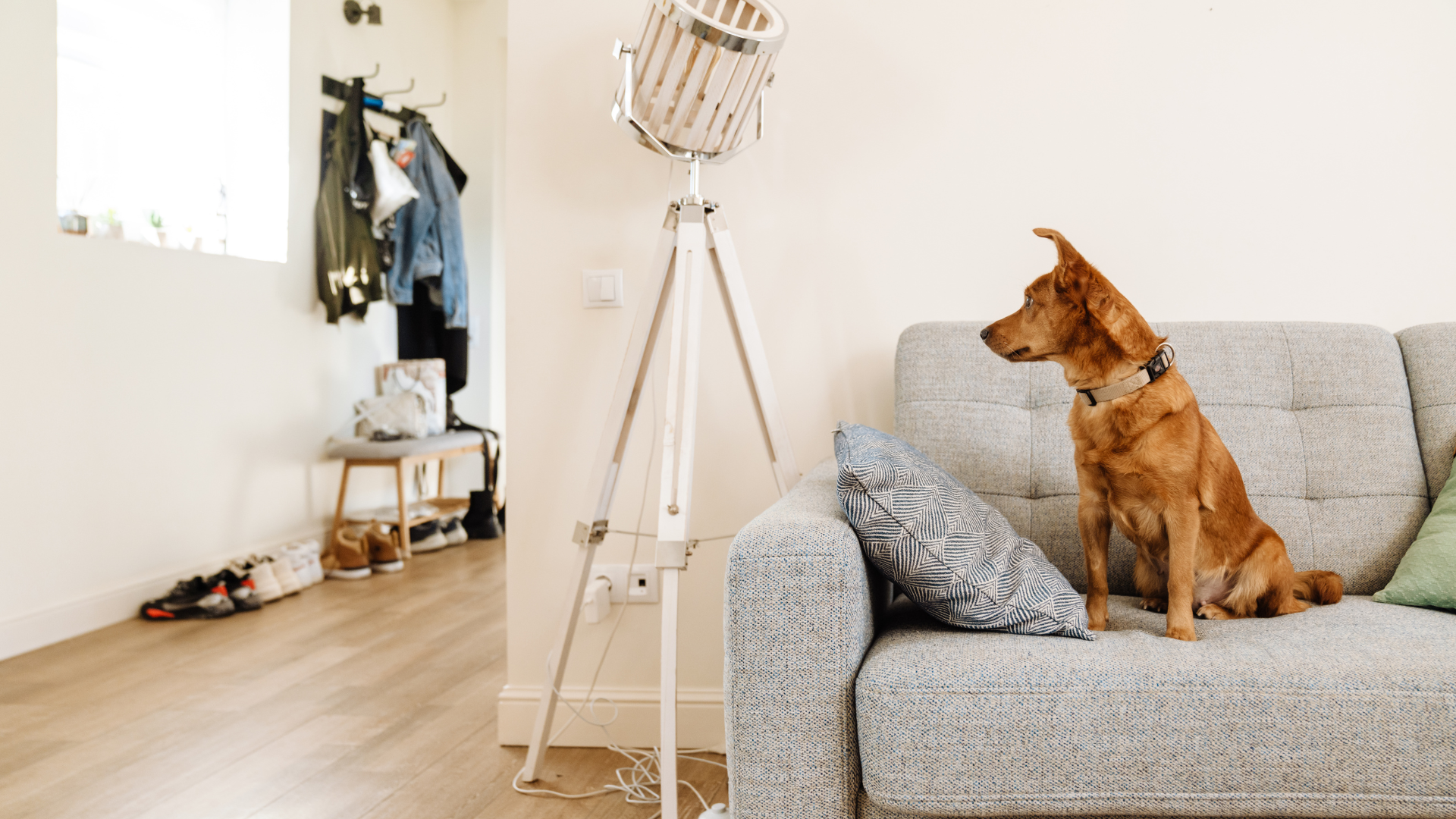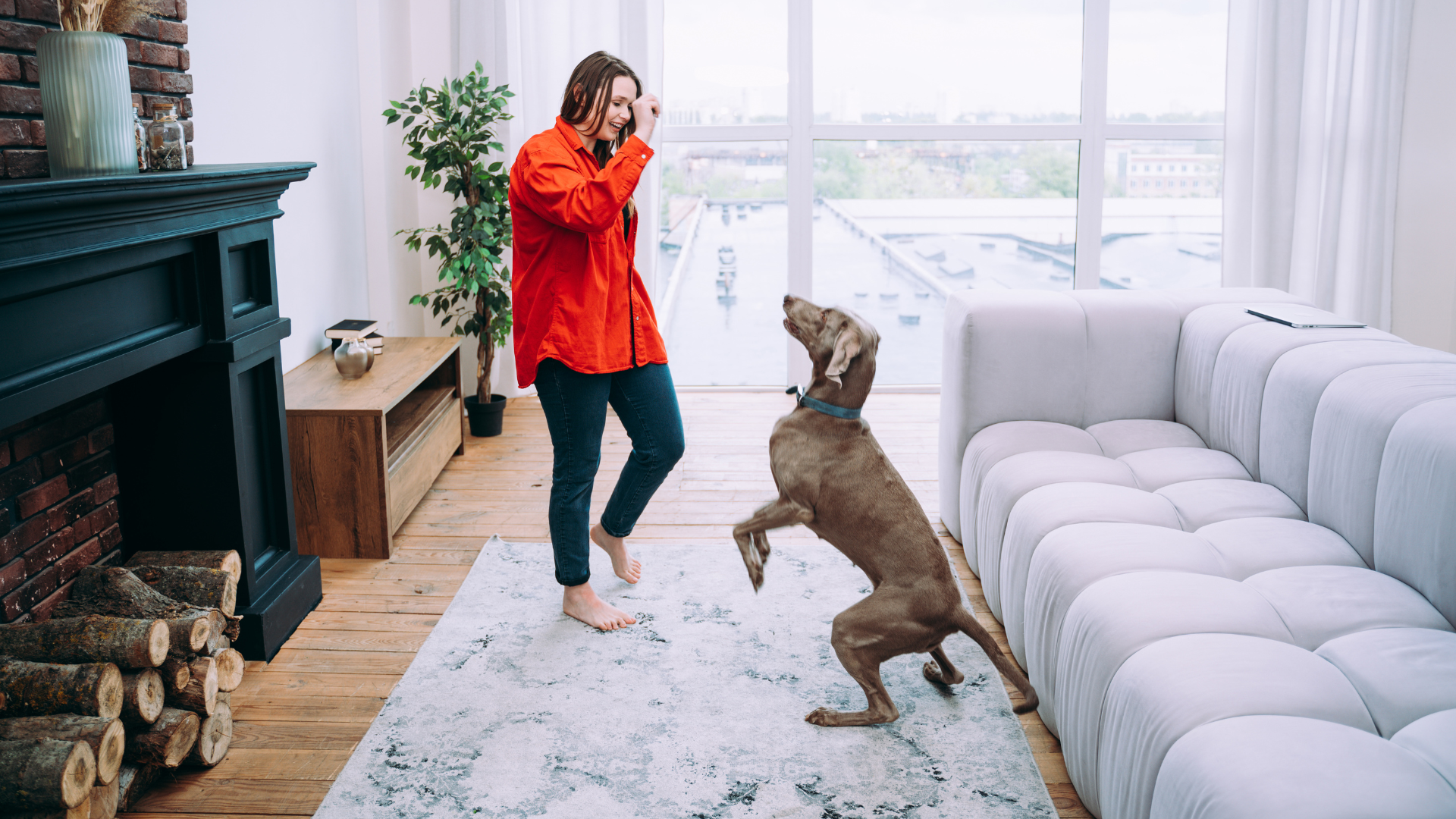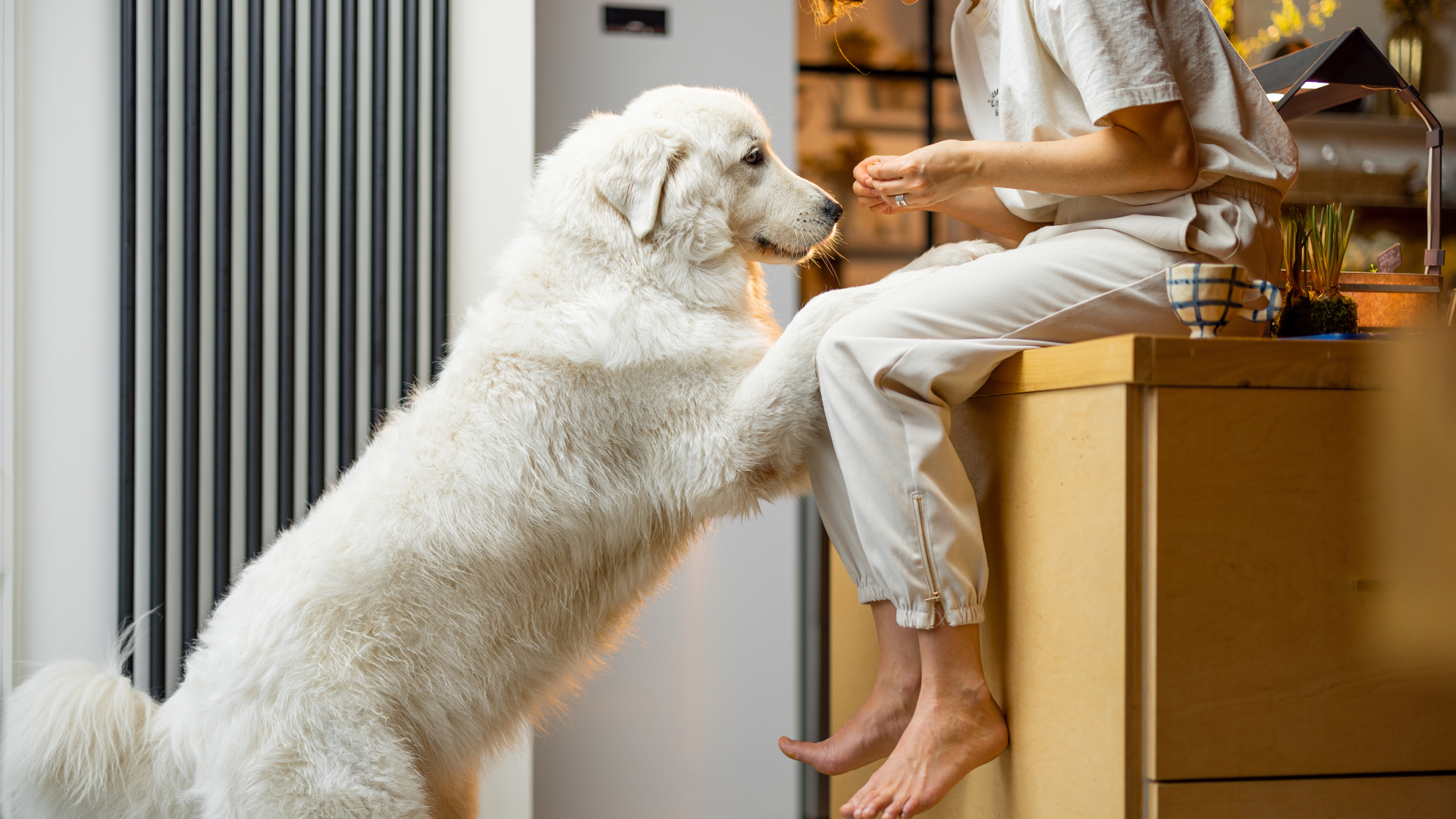Dog ownership is a rewarding and fulfilling experience. However, it comes with a significant amount of responsibility, especially when it comes to dog-proofing your home. As a dog mom, it's essential to ensure your furry friend's safety by creating a safe and secure environment for them to thrive in.

Whether you're a first-time dog owner or a seasoned pro, dog-proofing your home is a crucial step in keeping your furry friend safe. From keeping dangerous items out of reach to securing hazardous areas, there are several steps you can take to ensure your dog's safety. This article will provide you with the ultimate guide to dog-proofing your home, giving you peace of mind knowing that your furry friend is safe and secure.
Understanding Dog Behavior
Canine Instincts and Habits
Dogs are intelligent animals with natural instincts that have been honed over centuries of evolution. Understanding their instincts and habits can help you anticipate their behavior and prevent destructive actions. For example, dogs are pack animals and are naturally inclined to follow a leader. By establishing yourself as the pack leader, you can help your dog feel secure and reduce anxiety.

Another important instinct for dogs is the desire to chew. Puppies, in particular, will chew on almost anything as they explore their environment and alleviate teething discomfort. Providing appropriate chew toys and supervising your dog's playtime can help redirect this behavior and prevent destructive chewing.
Common Destructive Behaviors
Dogs may engage in destructive behavior for a variety of reasons, including boredom, anxiety, and lack of exercise. Common destructive behaviors include chewing, digging, and scratching. By identifying the underlying cause of these behaviors, you can take steps to prevent them from occurring.
For example, if your dog is chewing on furniture, it may be a sign that they are not getting enough exercise or mental stimulation. Providing regular exercise and interactive toys can help alleviate boredom and prevent destructive chewing. Similarly, if your dog is digging in the yard, it may be a sign that they are trying to escape or are not getting enough exercise. Providing a designated digging area or increasing exercise time can help redirect this behavior.
By understanding your dog's instincts and habits, and addressing any underlying causes of destructive behavior, you can create a safe and happy home for both you and your furry friend.
Assessing Your Home for Hazards
Before you bring your furry friend home, it is important to assess your home for potential hazards. This will help you identify and eliminate any dangers that could harm your dog. Here are some things to consider:
Indoor Dangers
Indoor hazards can include anything from toxic plants to electrical cords. Make sure to keep the following items out of your dog's reach:
- Toxic plants such as lilies, azaleas, and ivy
- Electrical cords and wires
- Cleaning products and chemicals
- Human medications
- Sharp objects such as knives and scissors
It is also important to secure cabinets and drawers that contain hazardous items. You can use childproof locks to keep your dog from accessing these areas.
Outdoor Risks
Your yard can also pose risks to your dog's safety. Check for the following hazards:
- Toxic plants such as rhododendrons, azaleas, and oleanders
- Sharp objects such as broken glass and nails
- Fences and gates that are not secure
- Pools and ponds that are not fenced off
Make sure to also supervise your dog while they are outside to ensure they do not eat anything harmful or escape from your yard.
By assessing your home for hazards, you can create a safe environment for your furry friend. Remember to always supervise your dog and keep hazardous items out of their reach.

Choosing the Right Materials
When it comes to dog-proofing your home, choosing the right materials is key to ensuring that your furry friend can coexist with your furniture and decor. Here are some tips on selecting materials that can withstand the wear and tear of life with a dog.
Durable Fabrics and Surfaces
When selecting fabrics for your furniture, it's important to choose materials that can stand up to scratches, spills, and general wear and tear. Synthetic fabrics like microfiber and polyester are good options as they are durable and easy to clean. Leather is also a great choice, as it is resistant to scratches and spills and can be wiped clean with a damp cloth. Avoid fabrics like silk, velvet, and linen, which are delicate and easily damaged.
For surfaces like countertops and tables, consider materials like granite, quartz, or concrete, which are scratch-resistant and easy to clean. Avoid surfaces like wood or marble, which can be easily damaged by scratches and spills.
Flooring Options
When it comes to flooring, durability is key. Hardwood floors are a popular choice, but they can be easily scratched by dog nails. Consider opting for harder woods like oak or maple, or choose a laminate or vinyl flooring that mimics the look of hardwood. Tile is also a great option, as it is scratch-resistant and easy to clean.
Carpet can be a bit trickier, as it can be easily stained and damaged by pet accidents. Consider opting for a low-pile carpet or a carpet made from synthetic materials like nylon, which are more resistant to stains and wear and tear. And remember to clean up any accidents as soon as possible to prevent stains from setting in.
By choosing the right materials for your home, you can create a space that is both stylish and dog-friendly.
Furniture and Decor

Dog-Friendly Furniture
When it comes to choosing furniture for a dog-friendly home, it's important to keep both style and durability in mind. Opt for materials that are easy to clean and can withstand scratches and spills. Leather and microfiber are great options for sofas and chairs, while wooden furniture can be protected with a coat of polyurethane.
Consider investing in pet-friendly furniture, such as a dog bed that complements your decor or a sofa with a built-in dog bed. This not only adds to the overall look of your home, but also provides a designated space for your furry friend to relax.
Secure Decorations and Breakables
Decorating a dog-friendly home can be a challenge, but it's important to keep your furry friend's safety in mind. Avoid using fragile or breakable items that could harm your dog if knocked over. Instead, opt for sturdy decor such as metal or wooden sculptures, or wall-mounted art that is out of reach.
If you have decorative items that are fragile or hold sentimental value, consider displaying them in a secure cabinet or on a high shelf. This not only keeps them safe from your dog, but also adds an extra layer of protection against accidents or spills.
By following these tips, you can create a stylish and dog-friendly home that is safe for your furry friend.
Creating a Safe Space
Dog-proofing a home is a crucial process that pet owners must undertake to ensure their furry friends' safety. Creating a safe space for dogs is an essential part of dog-proofing a home. Here are some tips on how to create a safe space for your dog.
Designating a Dog Zone
Designating a dog zone in your home is a great way to create a safe space for your dog. This area should be a place where your dog can relax and feel comfortable. It should be a space where your dog can play, sleep, and eat. The dog zone should be away from any dangerous areas in your home, such as the kitchen, laundry room, or garage.
To create a dog zone, you can use baby gates or barriers to section off an area of your home. You can also use furniture such as sofas, chairs, or tables to create a boundary. Make sure that the dog zone has enough space for your dog to move around comfortably.

Dog Beds and Crates
Dog beds and crates are essential items for creating a safe space for your dog. A comfortable dog bed provides a cozy place for your dog to relax and sleep. A crate provides a secure place for your dog to stay when you are not at home.
When choosing a dog bed, make sure that it is the right size for your dog. The bed should be big enough for your dog to stretch out comfortably. It should also be made of durable materials that can withstand your dog's chewing and scratching.
When choosing a crate, make sure that it is the right size for your dog. The crate should be big enough for your dog to stand up, turn around, and lie down comfortably. It should also be made of sturdy materials that can withstand your dog's chewing and scratching.
In conclusion, creating a safe space for your dog is an important part of dog-proofing your home. By designating a dog zone and providing comfortable dog beds and crates, you can create a safe and secure environment for your furry friend.
Chemicals and Plants
Toxic Substances
When dog-proofing your home, it is important to be aware of common household chemicals and substances that can be toxic to dogs. Some of these substances include cleaning products, pesticides, fertilizers, and certain human medications. It is important to keep these items out of reach of your dog, as ingestion can cause serious health problems and even be fatal.
To prevent accidental ingestion, store these items in cabinets or high shelves that your dog cannot access. If you must use these substances around your dog, make sure to keep a close eye on them and ensure that they do not come into contact with the chemicals.
Dog-Safe Plants
Many common houseplants and outdoor plants can be toxic to dogs if ingested. Some examples include lilies, azaleas, and daffodils. To dog-proof your home, consider replacing these plants with dog-safe alternatives such as spider plants, bamboo, and Boston ferns.
It is important to note that even dog-safe plants can cause digestive issues if ingested in large quantities. To prevent this, make sure to keep plants out of reach of your dog and monitor them closely when they are around plants.
By being aware of toxic substances and choosing dog-safe plants, you can help ensure a safe and healthy environment for your furry friend.
Training and Behavior Modification

Basic Commands
Training your dog to follow basic commands is an essential part of dog-proofing your home. Basic commands such as "sit," "stay," and "come" can help keep your dog safe and prevent them from getting into trouble.
To teach your dog basic commands, it's important to use positive reinforcement techniques. This means rewarding your dog with treats or praise when they follow commands correctly. Consistency is also key - make sure to use the same commands every time and practice regularly.
Behavioral Reinforcement
In addition to teaching basic commands, behavior modification techniques can also be used to dog-proof your home. For example, if your dog has a habit of chewing on furniture, you can use bitter apple spray or other deterrents to discourage this behavior.
It's important to remember that behavior modification takes time and patience. Punishing your dog for unwanted behavior can actually make the behavior worse. Instead, focus on positive reinforcement and redirecting your dog's attention to more appropriate activities.
By using a combination of basic commands and behavior modification techniques, you can help ensure that your home is safe and comfortable for both you and your furry friend.
Emergency Preparedness
First Aid Kit
Every responsible dog owner should have a first aid kit readily available in case of an emergency. The kit should include basic supplies such as gauze, bandages, antiseptic solution, tweezers, and scissors. It is also important to include any medication that your dog may need in case of an emergency, such as allergy medication or pain relievers. A quick reference guide to common emergency situations and how to handle them should also be included in the kit.
Emergency Plan
In case of an emergency, it is important to have a plan in place to ensure the safety of both you and your dog. The emergency plan should include a list of emergency contacts, including your veterinarian and local animal control agency. It is also important to have a designated meeting place in case you and your dog become separated during the emergency.
Additionally, it is important to have an emergency kit packed and ready to go in case you need to evacuate your home. The kit should include food, water, medication, and any other necessary supplies for your dog. It is also important to have a leash and collar with identification tags on hand in case your dog becomes separated from you during the emergency.
By having a first aid kit and emergency plan in place, you can ensure that you are prepared for any emergency situation that may arise and can keep your dog safe and healthy.

Conclusion
By following this comprehensive guide, you can create a safe and welcoming environment for your furry companion. Dog-proofing your home not only protects your pet from harm but also enhances your bond and provides peace of mind.
FAQs (Frequently Asked Questions)
- How often should I update my dog-proofing measures?
- Regularly assess and update your dog-proofing strategies, especially as your dog grows or if you introduce new items into your home.
- What should I do if my dog ingests something toxic?
- Contact your veterinarian immediately and have information about the substance ready, including its packaging if possible.
- Can dog-proofing help with behavioral issues?
- Yes, creating a safe environment can prevent unwanted behaviors and promote positive interactions with your dog.
- Do I need to supervise my dog at all times?
- While supervision is crucial, providing designated safe areas can offer your dog freedom within boundaries.
- How can I help my dog adjust to a new dog-proofing setup?
- Gradually introduce changes and use positive reinforcement to help your dog adapt to the new environment.




